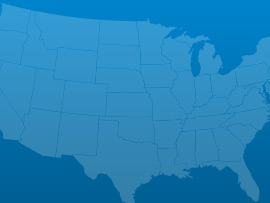Wastewater collection and treatment facilities preserve public health and maintain Iowa’s water environment quality. Iowa’s centralized wastewater treatment facilities serve 86% of Iowa’s population. Wastewater discharges that do not meet state and federal requirements can damage delicate ecosystems and create costly environmental consequences. While wastewater plants are regularly inspected and maintained, the collection lines are often allowed to reach the end of their service lives without being checked, leading to unexpected collapse, back-ups, and the need for emergency repairs. Urban areas are also seeing growth in sewerage collection and treatment needs. The latest EPA Clean Watersheds Needs Survey shows that $3.7 billion is necessary for Iowa’s wastewater infrastructure over the next 20 years; this marks a 212% increase from needs reported in 2004. A substantial part of these needs will be to replace collection lines in coming years due to age.
 Aviation
Aviation Bridges
Bridges Dams
Dams Drinking Water
Drinking Water Energy
Energy Inland Waterways
Inland Waterways Levees
Levees Rail
Rail Roads
Roads Solid Waste
Solid Waste Wastewater
WastewaterA: Exceptional, B: Good, C: Mediocre, D: Poor, F: Failing, ?: Incomplete
Each category was evaluated on the basis of capacity, condition, funding, future need, operation and maintenance, public safety, resilience, and innovation
Aviation
78 public-use airports
Bridges
5,043 of the 24,398 bridges are structurally deficient
Bridges
$56 million in bridge funds came from the Federal Highway Bridge Fund in 2011
Dams
91 high hazard dams
Dams
23% of the state regulated dams have an Emergency Action Plan
Drinking Water
$5.9 billion in drinking water infrastructure needs over the next 20 years
Energy
10.309 gigawatt-hours of renewable energy every year, ranking it 10th
Hazardous Waste
11 sites on the National Priorities List
Inland Waterways
490 miles of inland waterways, ranking it 19th nationally
Levees
889 miles of levees
Ports
10.3 million short tons of cargo in 2012, ranking it 35th nationally
Public Parks
$3.0 million of unmet needs for its parks system
Rail
15 freight railroads covering 3,897 miles across the state, ranking 11th nationally by mileage
Roads
$935 million a year in costs to motorists from driving on roads in need of repair, which is $422 /yr per motorist
Roads
10,560 of the state’s 114,438 public roads are major roads, and 12% are in poor condition
Schools
$4.7 billion in estimated school infrastructure funding needs
Transit
21.3 million annual unlinked passenger trips via transit systems including bus, transit, and commuter trains
Wastewater
$3.4 billion in wastewater infrastructure needs over the next 20 years

March 03, 2017
As the President’s repeated in his address to Congress his pledge to dramatically increase infrastructure spending to the tune of $1 trillion, various Congressional Committees

March 01, 2017
On Tuesday night, President Trump addressed a joint-session of Congress for the first time in his presidency. Infrastructure was among the many issues he discussed.

February 28, 2017
U.S. motorists set a new record for vehicle miles travelled (VMT) in 2016, driving over 3.2 trillion miles, an increase of 70 billion miles from

February 17, 2017
Romantic dates, the Grammy awards and celebrating black history are not the only milestones of this week; the Oroville dam crisis in California and the